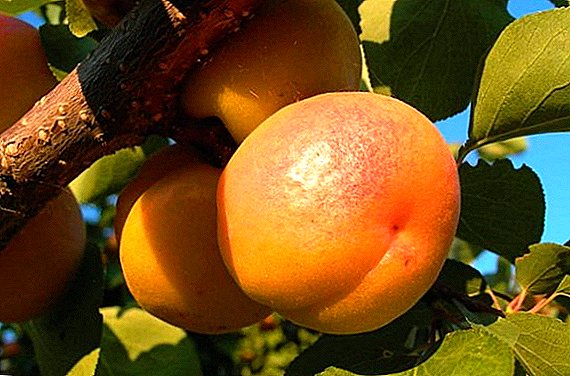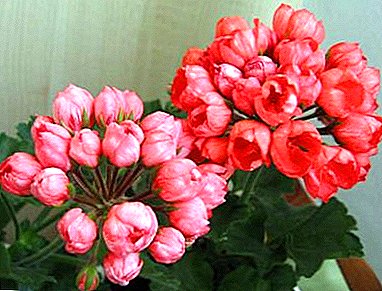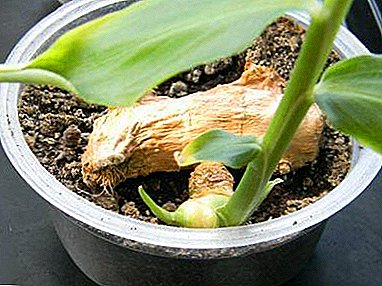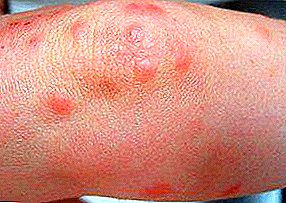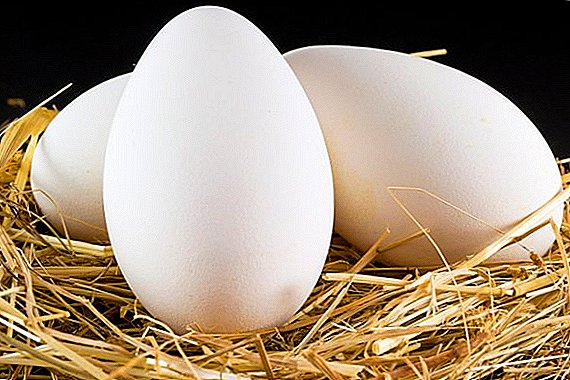 If you decide to start breeding geese, first of all you need to think about breeding young animals. You can, of course, just buy young goslings, but with some baggage of theoretical knowledge, patience and following certain rules, it is quite possible to achieve at home a high percentage of hatchlings raised.
If you decide to start breeding geese, first of all you need to think about breeding young animals. You can, of course, just buy young goslings, but with some baggage of theoretical knowledge, patience and following certain rules, it is quite possible to achieve at home a high percentage of hatchlings raised.
How to keep goose eggs and how much
In the warm season, you need to collect eggs twice a day - in the morning and in the evening. In the spring, due to temperature fluctuations, they are threatened with hypothermia, in the summer heat is a threat. Try to take them warm and store them in a cool place. 
One should not allow the incubation material to remain in the nest for a long time even for this reason: air enters the egg through the air chamber, and if the place where it is located is dirty and damp, bacteria get inside.
It will be useful for you to learn how goose eggs differ from chicken eggs and how to cook them.
For incubation, you need to collect a batch of eggs. During the collection period, they should be stored horizontally and should be turned over regularly. Optimum storage conditions:
- temperature - up to 12 ° C;
- humidity - up to 80%.
Of great importance is the period that the material lay before incubation. The norm is a period of 10 days, then the probability of successful elimination begins to decrease. 
How to increase shelf life
The shelf life of the incubation material can be increased in the following ways:
- Egg, 2-4 days after it was demolished (but not later than 4 days), put in an incubator (at 38 ° C). After 5 hours, remove and store for storage in a cooler room.
- Heating of the incubation material with a quartz lamp. The distance is 0.4 meters, the duration of the procedure is 1/2 hour. Such irradiation stimulates the production of vitamin D, which is of great importance for the viability of the embryo.
- Every day, the eggs are heated to a temperature of 37 ° C. The duration of the procedure is 1 hour. This method is called "artificial nest", it mimics the presence of a goose in the nest.
- Heating of the material immediately before incubation. Such a measure stimulates metabolic processes, heating does not allow them to finally stand still. Heating is carried out at 22-26 ° C for 12-18 hours.
- Storage in high nitrogen gas mixture. The material after collection is treated with antiseptics, cooled and placed in packages of dense polyethylene. Packages filled through the hose with nitrogen from a cylinder and hermetically sealed. Store for 16-18 days. Nitrogen is an inert gas, in its presence the activity of microorganisms decreases, putrefactive processes stop.
- Increase above the incubation temperature in the initial period. An increase in temperature stimulates metabolic processes and increases metabolism, and as a result, the probability of successful hatching increases.

Rules for laying eggs in an incubator
In order to incubate successfully, it is necessary to take into account the peculiarities of this process from the very beginning:
- If the incubator is designed for breeding birds of different species, you must put the goose eggs in trays specially designed for them.
- We must make sure that they are all the same size and free from defects.
- Before laying eggs in the incubator should be labeled with a symbol, for example, "+". Such marking will avoid confusion when turning over.
- Eggs should be heated before laying to room temperature, leaving them for 8-10 hours indoors at 25 ° C.
- Before starting the operation, the incubator should be heated to 37.6-37.9 ° C.

How to choose eggs
First conduct a visual inspection of the incubation material. For internal inspection using ovoskop.
- It is necessary to choose eggs of the correct form, without growths, of medium size, typical for this breed: for light breeds - 120-140 g, for heavy ones - 160-180 g. Height - 8-10 cm, diameter - up to 5 cm.
- For incubation, material from layers between 2 and 4 years is suitable.
- The presence of spots of green (perhaps reddish) on the shell indicates that they are stored for too long - probably, irreversible processes have begun in them.
- The yolk and protein must be isolated from each other.
- The yolk should be one, without inclusions and stains, not to touch the shell. Inside there should not be any spots, small dots or blotches.
- The air chamber should be under the blunt end, firmly hold, not move.
Checking eggs, both before incubation and during, are important steps in breeding chicks. Read about what an ovoscope is and how to properly egg eggs.
 Use ovoskop for internal inspection of eggs
Use ovoskop for internal inspection of eggs
Do I need to wash eggs before incubation
Incubation material is washed only if it is very dirty. For this procedure, use a weak solution of potassium permanganate or hydroperit. Washing is carried out carefully, trying not to disturb the outer layer of the shell. It is impossible to rub and wipe the eggs after washing, this can disturb the outer layer.
It is interesting to know whether you can drink or eat raw eggs and what is the weight of the eggs.
Features nesting goose eggs
After the start of the incubation process, it is necessary to constantly monitor such factors:
- temperature;
- humidity;
- turning over at certain intervals.
 To get a high percentage of brood, you need to pay attention to some features of incubation:
To get a high percentage of brood, you need to pay attention to some features of incubation:
- for the first 2 weeks, make sure that the incubation material is not supercooling, but light and short overheating is permissible;
- the second 2 weeks, on the contrary, should not be allowed to overheat, for this, 2 times a day, the device is turned off for 1/4 hour.
It is known that with a long egg content, they lose their nutritional value and become hazardous to health. Learn how to determine the freshness of an egg at home, and in particular how to check the freshness of an egg by dipping it in water.
Of great importance is the correct humidity. Goose eggs have a thick shell, so in order to make it easier for the chick to hatch, it is necessary to regulate the humidity of the air according to the following scheme:
- first week - 70%;
- the second and fourth - 60%;
- on the 28th day before hatching, the air humidity is increased up to 90%.
 On the sixth day of incubation, they begin to irrigate with a slightly pink solution of potassium permanganate (0.02%). Spraying carried out in this way:
On the sixth day of incubation, they begin to irrigate with a slightly pink solution of potassium permanganate (0.02%). Spraying carried out in this way:
- from 6 to 10 days - 1 time;
- from 11 to 20 - 2 times;
- from 21 to 24-3 times;
- from 25 to 27 - 4 times.
Important! Each day of storage adds 1 hour to the time of incubation. So, when drawing up the incubation schedule, you should consider the number of days that the incubation material was stored.
This procedure promotes cooling and normalizes gas exchange processes.  Spraying goose eggs with potassium permanganate To incubate as successfully as possible, try to avoid such mistakes:
Spraying goose eggs with potassium permanganate To incubate as successfully as possible, try to avoid such mistakes:
- non-compliance with the temperature regime leads to the death of the embryo, or the appearance of chicks with pathologies;
- excessive moisture or dryness may prevent the goose from hatching;
- due to non-observance of time intervals for turning eggs, the future goose can dry to the shell;
- do not often open the device on the day of hatching - let the goslings dry out, otherwise they may die from hypothermia;
- sudden fluctuations of light in the device can cause the death of the embryo.
In addition to eggs, eggshell also has beneficial properties. Check out what the eggshell is useful for humans, how to cook and how to use in traditional medicine.
On average, from one goose you can get 45-75 eggs per year. In comparison with egg production of hens, egg breeds are extremely small. So this is quite a valuable resource, which should be treated very carefully, observing all the rules for breeding chicks. And for this it is necessary to study the features of incubation at home and try to avoid possible mistakes.


